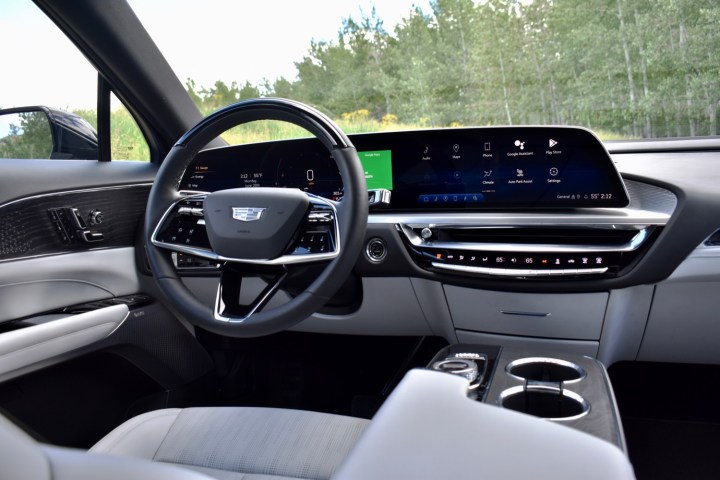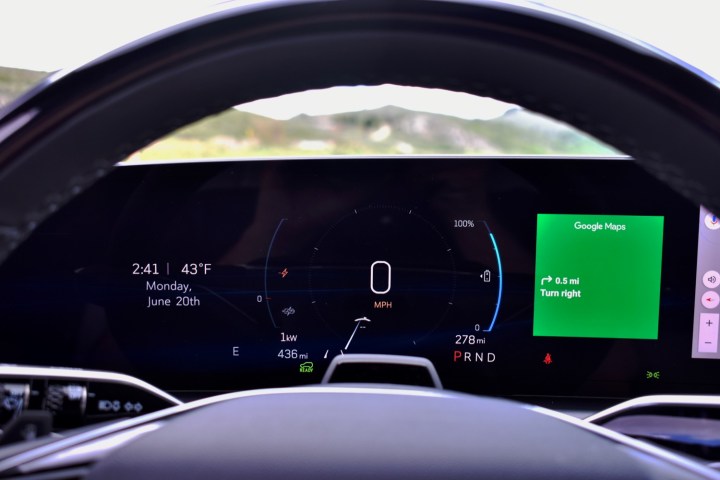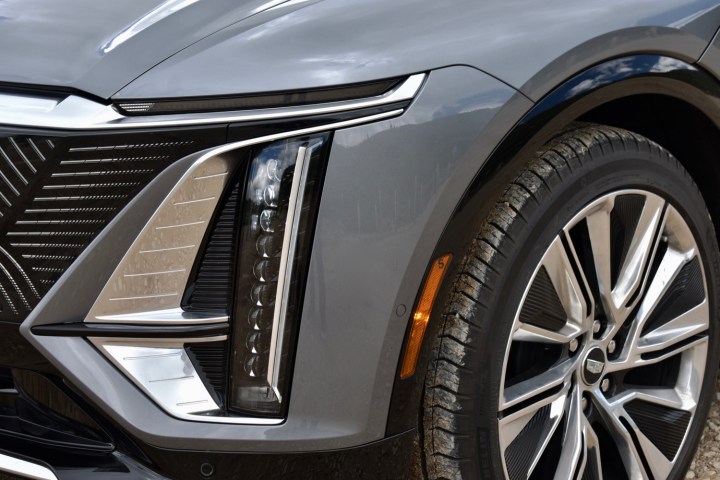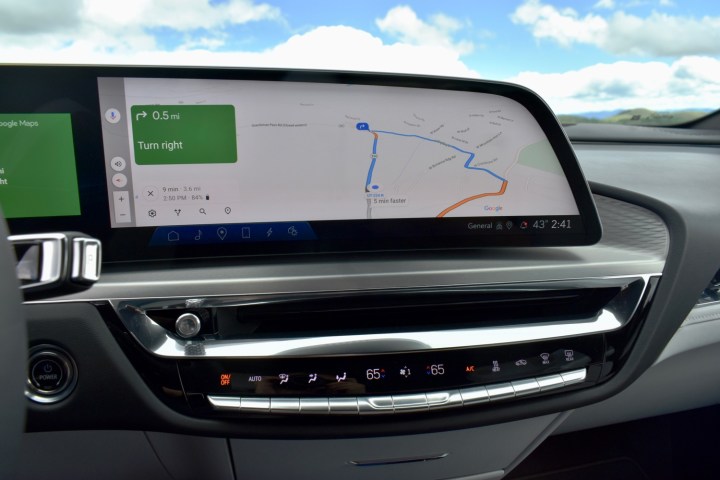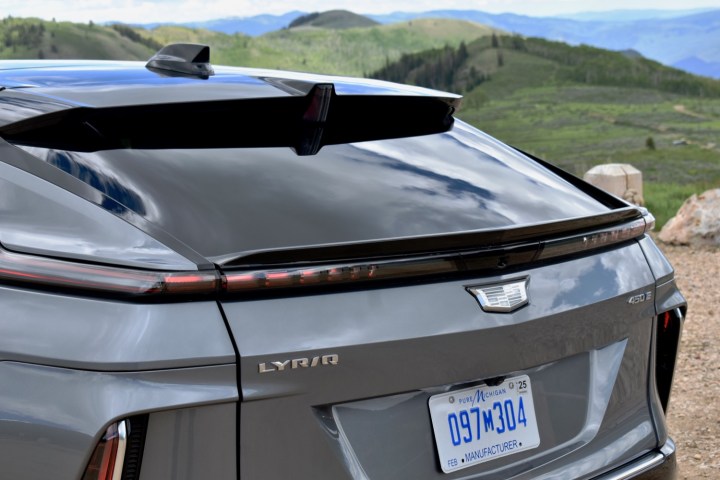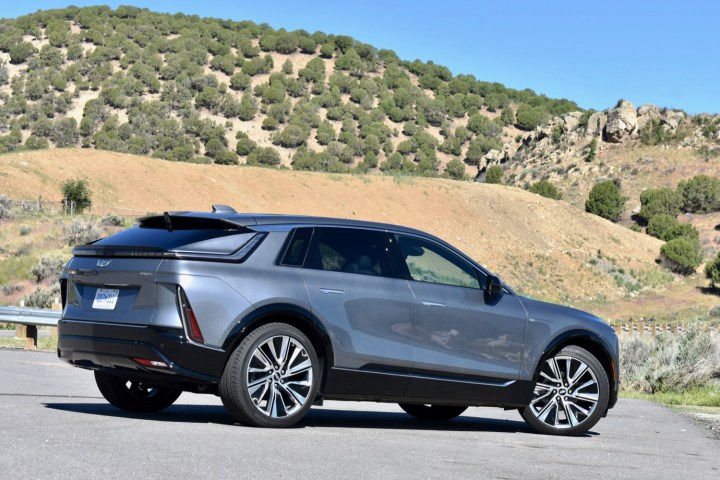The 2023 Cadillac Lyriq feels like it’s taken forever to arrive, and not just because Cadillac first showed it almost two years ago. This electric SUV is also a big step toward fulfilling General Motors’ EV potential.
GM showed that it could be a leader in electrification with the Chevrolet Bolt EV, but never seemed confident enough in the little electric hatchback to aggressively promote it. The GMC Hummer EV debuted GM’s next-generation Ultium tech, but in the form of a four-wheeled vanity project targeting a small market niche.
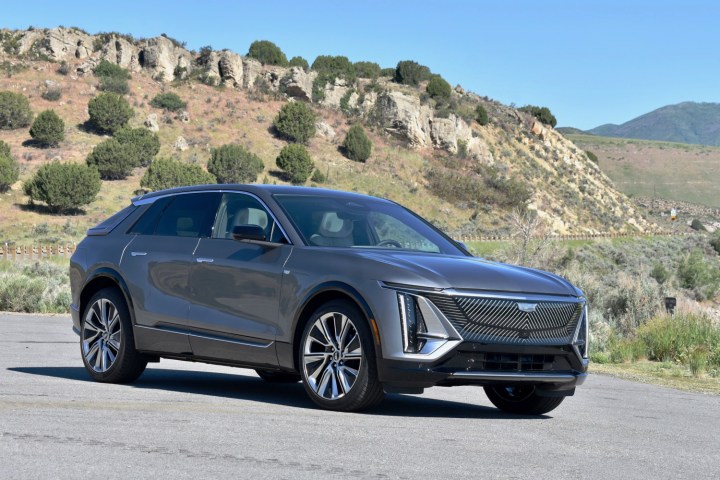
The Lyriq (pronounced “lyric”) is still a luxury model, but it’s arguably the first GM EV that will really go head-to-head with internal-combustion vehicles. SUVs are now the bread-and-butter of Cadillac and other luxury brands, to the extent that the Lyriq already has a few all-electric competitors. Cadillac will not only have to convince would-be buyers of gasoline SUVs, but also shoppers eyeing the Audi E-Tron, BMW iX, Jaguar I-Pace, and Tesla Model X. It’s already done a pretty good job, as the entire 2023 model year production run has already sold out.
While some buyers may just want to be the first on their block with something new, Cadillac’s first all-electric model also looks strong at first glance. Base prices of $62,990 for single-motor rear-wheel drive versions and $64,990 for dual-motor all-wheel drive models are competitive. Cadillac also brings serious tech to the fight, including the aforementioned Ultium battery system and a 33-inch infotainment display. When it comes to selling EVs, GM is finally taking the gloves off.
Design and interior
Cadillac has been making bold design statements for 20 years. From the angular first-generation CTS sedan to the brash current-generation Escalade, attention-grabbing styling is practically expected from GM’s luxury brand. But even compared to previous efforts, the Lyriq stands out.
The Lyriq looks like a concept car, not something you can actually buy. It’s a complete rethink of what Cadillacs — and SUVs in general — can look like. With no need for a traditional grille, designers rearranged the front fascia around an illuminated panel, flanked by pentagonal trim pieces and vertical lighting elements, while the rear gets an unusual basket-handle treatment. While still high-riding, the Lyriq also has a much sleeker profile than traditional SUVs, without looking like an amorphous blob. All of these design elements work together as a cohesive whole, and aren’t just different for the sake of being different.
The Lyriq looks like a concept car, not something you can actually buy.
That fashion-forward exterior doesn’t destroy interior packaging, either. Headroom isn’t very generous, but the Lyriq offers substantially more legroom than the Audi E-Tron, BMW iX, and Jaguar I-Pace (Tesla doesn’t publish complete interior measurements for its vehicles). The Cadillac’s 28.0 cubic feet of cargo space with the rear seats in place and 60.8 cubic feet with the second row folded are respectable as well, but less than you get in the BMW iX.
The interior is both stylish and practical. Unlike other Cadillac SUVs, the Lyriq doesn’t share materials or parts with lesser General Motors models. Cadillac also included cool details like pixelated cutouts in the wood trim, with exposed metal beneath. The obligatory leather upholstery is included, as is a massive glass roof that covers both rows (with a retractable shade for hot days). A floating center console houses cupholders and an infotainment control knob, leaving plenty of useful storage space below. The only issue we had was with the bright metal dashboard trim, which tended to generate glare in direct sunlight.
Tech, infotainment, and driver assist
At first glance, the Lyriq’s 33-inch dashboard display looks similar to the 38-inch display in the Cadillac Escalade. But in addition to being smaller, the Lyriq’s version is just standard LED rather than OLED, and is actually one continuous screen rather than three smaller screens nested together.
The layout is pretty much the same as the Escalade’s, though. The screen is divided into thirds, including a central touchscreen, an instrument cluster for the driver, and a smaller section on the extreme left that controls the headlights, display settings for the instrument cluster, and a handful of other functions.
While we had a hard time getting used to tapping a screen to turn on the headlights, we generally liked this interface. The curved display keeps everything close to the driver’s line of sight while also keeping the touchscreen within easy view of the front passenger. The graphics were very sharp despite the non-OLED displays, but lacked the more imaginative designs of the BMW iX.
The curved display keeps everything close to the driver’s line of sight.
The infotainment system also includes wireless Apple CarPlay and Android Auto connectivity, along with Google Built-In functions, including Google Assistant, Google Maps, and Google Play. A 19-speaker AKG audio system is available as well, with headrest speakers and adaptive volume.
The Lyriq will also get GM’s Super Cruise hands-free driver-assist system, but not at launch. Cars will ship with all of the hardware for Super Cruise, which controls acceleration, braking, and steering on premapped sections of highway, but the software will be pushed later via an over-the-air update.
The delay is due to the fact that GM plans to offer an upgraded version of Super Cruise with more features on the Lyriq. The system and the vehicle were supposed to be ready at the same time, but GM pulled the launch of the Lyriq forward, leaving insufficient time to finish the new version of Super Cruise, Keith Badgley, lead development engineer for the Lyriq, explained to Digital Trends. In the meantime, cars still have more basic driver aids like adaptive cruise control and lane-keep assist.
Driving experience
The single-motor rear-wheel drive launch version produces 340 horsepower and 325 pound-feet of torque. Cadillac expects the dual-motor all-wheel drive version to have at least 500 hp, along with a 3,500-pound towing capacity, but specifications haven’t been finalized. Both versions have a 100-kilowatt-hour battery pack.
The Lyriq drives like a remastered version of a classic Cadillac.
Instant torque makes every EV feel abnormally quick, and that’s still the case here. The Lyriq didn’t set new standards for accelerative force, but still felt like it had more than enough power. The upcoming 500-hp all-wheel drive version will likely be entertaining but, at least when it comes power, it won’t be necessary.
The Lyriq isn’t a performance SUV, anyway. It drives like a remastered version of a classic Cadillac, keeping the good aspects of the driving experience while addressing the bad. Riding on five-link front and rear suspension, the Lyriq was admirably smooth, but without the waterbed-like bouncing once associated with Cadillacs. And while handling was not the top engineering priority, we were impressed by the steering’s precision and lack of body roll, which made cornering serene and drama-free.
Cadillac also took a smart approach to regenerative braking, which allows EVs and hybrids to decelerate without using the friction brakes while recovering energy. Lyriq drivers can choose from low or high settings, or turn regeneration off completely. Additionally, a steering-wheel paddle provides regeneration on demand, a sensation that’s similar to the engine braking in internal-combustion cars. Overall, drivers get more control, which we prefer to, for example, the more opaque adaptive regeneration system used by BMW in the iX.
Range, charging, and safety
Cadillac estimates 312 miles of range for the single-motor rear-wheel drive Lyriq. Range estimates for the dual-motor all-wheel drive version will be published closer to its launch.
Cadillac offers a few charging options, but only quotes miles of range added rather than full recharge times. A standard dual-level charge cord allows owners to plug into a 240-volt outlet without a dedicated charging station. This charges at a relatively low 7.7 kilowatts, adding 21 miles of range per hour for rear-wheel drive models, and 19 miles of range per hour for all-wheel drive models.
With a dedicated 11.5-kW Level 2 AC charging station, the Lyriq can add a claimed 37 miles of range per hour with either powertrain. The maximum power rate for DC fast charging is 190 kW, recovering 76 miles of range in 10 minutes of charging. That puts the Lyriq in a bit of a no man’s land, however, as most public stations are either 150 kW or 350 kW. Lyriq drivers won’t be able to take advantage of the most powerful stations, but might still find some that won’t let the car charge at its maximum rate.
The Lyriq gets a four-year, 50,000-mile, bumper-to-bumper limited warranty and an eight-year, 100,000-mile warranty covering the battery pack and powertrain components. Those are pretty typical warranty terms for an EV in the current market.
Crash-test ratings from the Insurance Institute for Highway Safety (IIHS) and National Highway Traffic Safety Administration (NHTSA) weren’t available at the time of publication. That’s often the case with new models.
How DT would configure this car
For now, Cadillac is only offering a choice of single-motor rear-wheel drive and dual-motor all-wheel drive models. Expect a full array of trim levels and option packages further into the Lyriq’s production run.
While we didn’t get to sample the all-wheel drive version, the rear-wheel drive model didn’t leave us wanting. It had more than enough power, and the 312-mile range is reasonable for this kind of vehicle. The all-wheel drive version will have more power and better traction for inclement weather, but it’s also more expensive, and there’s no guarantee that it will offer more range.
However, the main issue isn’t choosing a configuration == it’s getting a Lyriq at all. With the 2023 model year run sold out, GM is currently taking pre-orders for 2024 models. But it doesn’t plan to start deliveries of 2023 Lyriqs until roughly a year from now, at the earliest. That’s a shame, because the Lyriq is definitely something luxury EV shoppers should consider.
Our take
The Lyriq shows how an EV can transform an existing car brand. It’s light-years ahead of the Cadillac XT6 and the automaker’s other crossover SUVs, while offering a more sophisticated take on luxury than the brutish Escalade.
The Lyriq is also a strong rival to other electric luxury SUVs. The Tesla Model X may offer more range and quicker acceleration, but it’s also much more expensive and looks somewhat dated compared to the Cadillac.
Where the Audi E-Tron aims to replicate the experience of a gasoline SUV, and the BMW iX tries to be as weird as possible, the Lyriq achieves a satisfying middle ground. It’s different, but not gimmicky. And unlike the Jaguar I-Pace, the Cadillac offers genuine SUV utility. The one thing these competitors have that the Lyriq doesn’t is standard all-wheel drive. That feature is why many shoppers choose SUVs in the first place.
More potential rivals are also on the way. The Rivian R1S is scheduled to start deliveries later this year, boasting real off-road capability and third-row seating. Further out is the Mercedes-Benz EQE SUV. It hasn’t been shown yet, but expect the dazzling Hyperscreen display from the EQS sedan, among other tech features. For now, though, Cadillac has delivered an impressive first EV.
Should you get one?
Yes. The Lyriq shows what General Motors can do when it tries.
